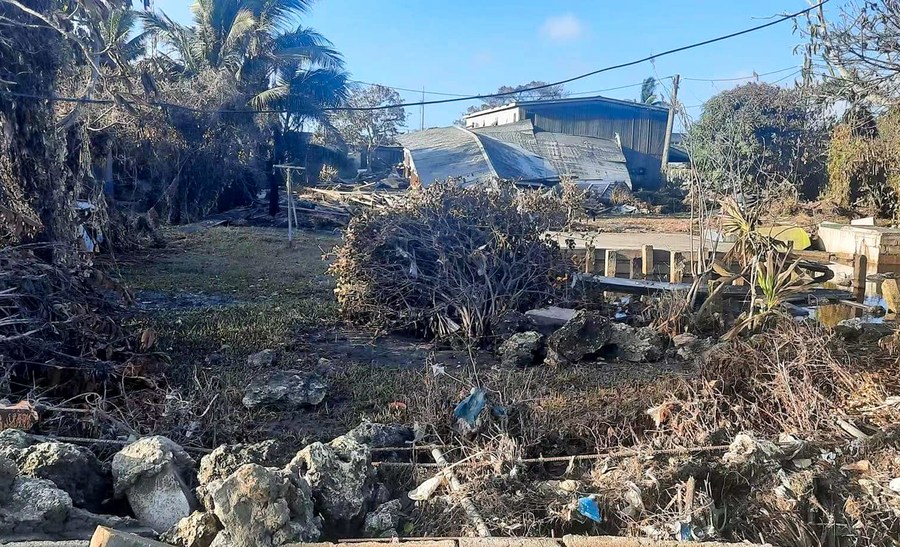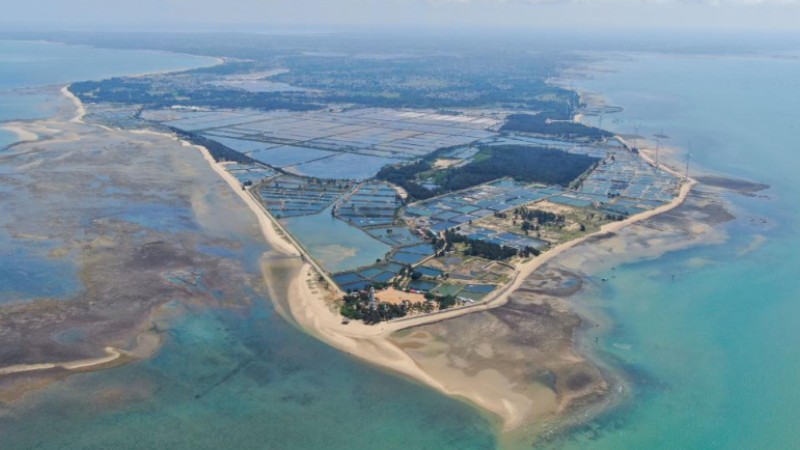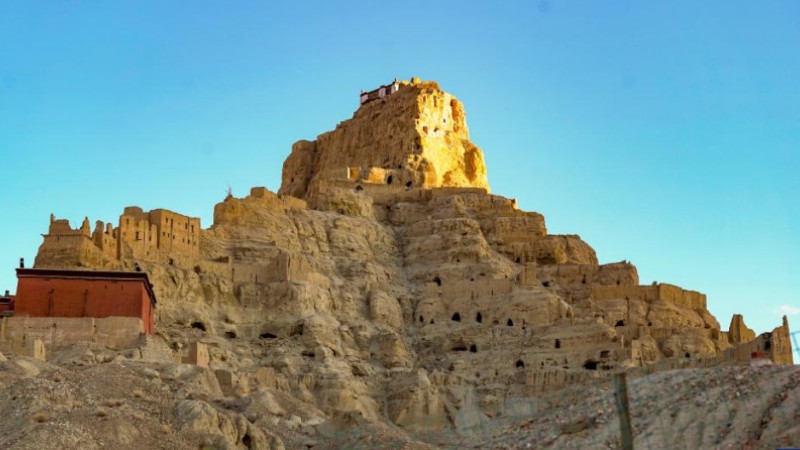NASA researchers test novel approach to detect tsunamis

Photo taken on Jan. 20, 2022 shows houses and infrastructures hit by tsunami in Nuku'alofa, capital of Tonga. (Photo by Marian Kupu/Xinhua)
The new hazard-monitoring technology uses GPS signals to go wave-hunting in the Pacific Ring of Fire. The new system sifts the signals for clues that a tsunami has arisen somewhere on Earth.
LOS ANGELES, May 31 (Xinhua) -- Scientists at the U.S. National Aeronautics and Space Administration (NASA)are testing a novel approach to detect tsunamis by the rumble they make in the atmosphere, the agency said on Wednesday.
The new hazard-monitoring technology, called GUARDIAN (GNSS Upper Atmospheric Real-time Disaster Information and Alert Network), uses GPS signals to go wave-hunting in the Pacific Ring of Fire. The new system sifts the signals for clues that a tsunami has arisen somewhere on Earth.
While navigation tools usually seek to correct for ionospheric disturbances, scientists can use them as a lifesaving alarm bell, noted Léo Martire, a scientist at NASA's Jet Propulsion Laboratory in Southern California developing GUARDIAN.
"Instead of correcting for this as an error, we use it as data to find natural hazards," Martire said.
GUARDIAN's long-term objective is to augment early warning systems, according to NASA.
Photos
Related Stories
- NASA, SpaceX target June 3 for next resupply mission launch
- Images from NASA's Mars rover show clues of wild Martian river
- NASA's Hubble Space Telescope captures extraordinarily bright interacting galaxies
- NASA InSight lander data offer first observations of Mars' core
- NASA's Mars helicopter set to hit new altitude record in new flight
Copyright © 2023 People's Daily Online. All Rights Reserved.









